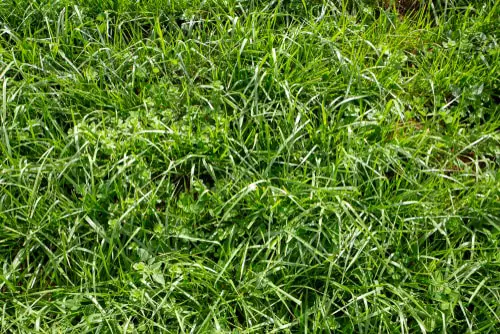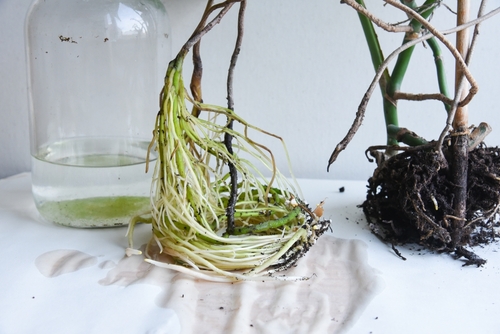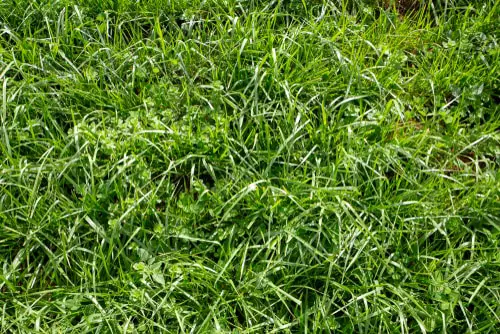Tall fescue is a popular grass type for many homeowners due to its durability and tolerance to drought. However, tall fescue turning yellow can be a cause of concern for many homeowners.
Yellowing of tall fescue can be caused by several factors, including weather conditions, watering practices, nutrient deficiency, fungal diseases, pests, and infestations, among others.
Understanding what causes tall fescue to turn yellow is essential in addressing the issue and reviving the grass. Weather conditions play a crucial role in the health of tall fescue.
Extreme heat, drought, and cold temperatures can cause stress to the grass, leading to yellowing. Watering practices are also essential in maintaining the health of tall fescue.
Overwatering or underwatering can cause stress to the grass, leading to yellowing. Nutrient deficiency and soil condition can also cause yellowing of tall fescue. Fungal diseases and pests and infestations can also cause yellowing of tall fescue.
Key Takeaways
- Yellowing of tall fescue can be caused by several factors, including weather conditions, watering practices, nutrient deficiency, fungal diseases, pests, and infestations.
- Understanding the role of weather conditions, watering practices, nutrient deficiency, soil condition, fungal diseases, pests, and infestations is essential in addressing the issue and reviving yellow tall fescue.
- Proper lawn maintenance practices, including regular watering, fertilization, and mowing, can help prevent yellowing of tall fescue and maintain the health of the grass.
Related posts:
Understanding Tall Fescue

Tall fescue is a type of grass that belongs to the cool-season grass family. It is commonly used for lawns, pastures, and sports fields because it is hardy and can withstand heavy foot traffic. Tall fescue grass is known for its deep root system, which allows it to tolerate drought and other environmental stresses.
Tall fescue grass is a bunch-type grass that grows in clumps rather than spreading out like other types of grass. It has a coarse texture and is typically darker green than other cool-season grasses. The blades of tall fescue grass are flat and wide, with a rough texture on the upper side.
One of the benefits of tall fescue grass is that it can grow well in a variety of soil types, including clay and sandy soils. It is also relatively low-maintenance and can thrive in both sun and shade.
However, like all grasses, tall fescue grass is susceptible to certain problems. One of the most common issues is yellowing of the grass blades, which can be caused by a variety of factors. These factors can include lack of water, improper fertilization, disease, or insect infestation.
Yellowing of Tall Fescue
Tall fescue is a popular grass type for lawns, thanks to its tolerance for shade, drought, and traffic. However, it is not immune to problems, and one of the most common issues is yellowing.
If you notice your tall fescue turning yellow, it could be a sign of stress or disease. In this section, we will explore the causes and identification of yellowing in tall fescue.
Causes of Yellowing
There are several reasons why tall fescue may turn yellow, including:
- Nutrient deficiency: Like all plants, tall fescue needs nutrients to grow and stay healthy. If it lacks essential nutrients such as nitrogen, iron, or potassium, it may start to yellow. A soil test can help identify any nutrient deficiencies.
- Overwatering or underwatering: Too much or too little water can stress tall fescue and cause it to yellow. Make sure you are watering your lawn properly, depending on the weather and soil conditions.
- Disease: Several diseases can cause yellowing in tall fescue, such as brown patch, dollar spot, and rust. These diseases can be identified by their distinct patterns and symptoms.
- Insects: Certain insects, such as chinch bugs and billbugs, can damage tall fescue and cause it to yellow. Look for signs of infestation, such as holes in the grass blades or dead patches.
Identifying Yellow Patches

To determine the cause of yellowing in your tall fescue, you first need to identify the affected areas. Here are some tips for identifying yellow patches:
- Look for patterns: Yellowing caused by nutrient deficiencies or diseases often appears in distinct patterns, such as rings or patches. Take note of the shape and size of the yellow areas.
- Check the roots: Gently pull up a few blades of grass from the yellow area and check the roots. If they are brown and mushy, it could be a sign of overwatering or a disease. If they are dry and brittle, it could be a sign of underwatering or a nutrient deficiency.
- Inspect for pests: Look for signs of insect activity, such as holes in the grass blades or tunnels in the soil. You may also see the insects themselves, such as chinch bugs or billbugs.
Effect of Weather Conditions
Tall fescue grass is a cool-season grass that is commonly grown in the United States. It can turn yellow due to various reasons, including weather conditions. In this section, we will discuss the impact of summer heat and winter dormancy on tall fescue grass.
Impact of Summer Heat
During the summer months, tall fescue grass can be stressed by high temperatures and drought conditions. When the weather is hot and dry, the grass may turn yellow due to heat stress and drought stress. These conditions can cause the grass to go dormant, which means that it will stop growing and turn yellow.
To prevent tall fescue grass from turning yellow during the summer, it is essential to water it regularly and deeply. It is also important to mow the grass to the correct height and to fertilize it properly. Additionally, providing shade to the grass can help it stay cooler and reduce the risk of heat stress.
Winter Dormancy
During the winter months, tall fescue grass can go dormant due to low temperatures and frost. When the grass is dormant, it will turn yellow and stop growing until the weather warms up again in the spring.
To prevent tall fescue grass from turning yellow during the winter, it is important to prepare it properly before the cold weather arrives. This includes fertilizing the grass in the fall and mowing it to the correct height. Additionally, providing proper drainage can help prevent the grass from being damaged by frost.
Watering Practices

Tall Fescue requires adequate water to maintain its green color and healthy growth. If the grass doesn’t receive enough water, its leaves will turn yellow and eventually brown. On the other hand, overwatering can also lead to yellowing and other problems.
A common mistake is watering too frequently but not deeply enough. Shallow watering can cause the roots to stay close to the surface, making the grass more susceptible to drought and disease. Instead, it’s recommended to water deeply and infrequently, allowing the water to penetrate the soil to a depth of at least 6 inches.
The amount of water needed depends on various factors, such as soil type, weather conditions, and the stage of growth. As a general rule, it’s better to water less frequently but more deeply.
A good way to check if the grass is receiving enough water is to stick a screwdriver or other long object into the soil. If it goes in easily, the soil is moist enough. If it’s hard to push in, the soil is too dry.
It’s also important to water at the right time of day. Watering during the hottest part of the day can cause the water to evaporate quickly, and watering at night can increase the risk of disease. The best time to water is early in the morning, before the sun gets too hot.
In addition to regular watering, it’s important to adjust the watering schedule based on weather conditions. During periods of heavy rain, it may not be necessary to water at all, while during droughts, it may be necessary to water more frequently.
Regularly monitoring the weather forecast and adjusting the watering schedule accordingly can help prevent yellowing and other problems caused by lack of water.
Nutrient Deficiency
One of the most common reasons for tall fescue grass turning yellow is nutrient deficiency. Nutrients are essential for the growth and health of the grass. When the grass does not get enough of the required nutrients, it starts to turn yellow, and its growth slows down.
Nitrogen, potassium, and phosphorus are the three essential nutrients that grass needs in large quantities. A lack of nitrogen is often the primary cause of yellowing in tall fescue grass. Nitrogen is responsible for the green color of the grass, and when there is not enough of it, the grass turns yellow.
Potassium is another essential nutrient that grass needs. It helps the grass to grow strong and healthy, and it is essential for root development. A lack of potassium can cause the grass to turn yellow, and its growth will slow down.
Phosphorus is the third essential nutrient that grass needs. It is responsible for the development of the roots, and it helps the grass to absorb other nutrients. A lack of phosphorus can cause the grass to turn yellow and stunt its growth.
Iron deficiency is another common cause of yellowing in tall fescue grass. Iron is essential for the production of chlorophyll, which gives the grass its green color. When there is not enough iron in the soil, the grass turns yellow.
To prevent nutrient deficiencies, it is essential to fertilize the lawn regularly. A starter fertilizer can be used when planting new grass, and a slow-release fertilizer can be used to maintain the health of the lawn.
However, over-fertilizing can lead to fertilizer burn and cause the grass to turn yellow. Therefore, it is important to follow the instructions on the fertilizer package and avoid over-fertilizing.
Role of Soil Condition

Soil condition plays a crucial role in the health of tall fescue grass. If the soil is not healthy, the grass will not be able to absorb the necessary nutrients and water it needs to thrive. Several factors can affect the soil condition, including soil pH, soil compaction, and soil structure.
1. Soil pH
Soil pH is the measure of the acidity or alkalinity of the soil. The ideal pH range for tall fescue grass is between 5.5 and 7.5. If the soil pH is too low or too high, it can affect the availability of nutrients in the soil.
For example, if the soil pH is too low, the grass may not be able to absorb enough calcium, magnesium, and phosphorus. On the other hand, if the soil pH is too high, the grass may not be able to absorb enough iron, manganese, and zinc.
2. Soil Compaction
Soil compaction is another factor that can affect the soil condition. When the soil is compacted, it becomes harder for the roots of the grass to penetrate the soil and absorb the necessary nutrients and water.
Soil compaction can be caused by heavy foot traffic, heavy machinery, or even heavy rain. To prevent soil compaction, it is essential to aerate the soil regularly.
3. Soil Structure
Soil structure refers to the arrangement of soil particles in the soil. The ideal soil structure for tall fescue grass is a loose, crumbly soil that allows air, water, and nutrients to move freely through the soil.
If the soil structure is too compacted or too loose, it can affect the growth of the grass. To improve the soil structure, it is essential to add organic matter to the soil, such as compost or leaf litter.
Fungal Diseases
Tall fescue lawns are susceptible to various fungal diseases that can cause yellowing of the grass blades. These diseases are caused by pathogenic fungi that infect the grass and cause damage to the leaves, stems, and roots. The most common fungal diseases that affect tall fescue lawns are brown patch and yellow patch.
Brown patch is a fungal disease that is caused by the Rhizoctonia solani fungus. It is characterized by circular or irregular patches of yellowing or brown grass that can range from a few inches to several feet in diameter.
The patches may have a reddish-brown border and can merge together to form larger areas of dead or dying grass. Brown patch is most common in warm, humid weather conditions and can be exacerbated by overwatering or over-fertilizing the lawn.
Yellow patch, also known as cool-weather brown patch, is caused by the same fungus as brown patch but occurs in cooler temperatures. It is characterized by circular patches of yellowing or brown grass that can range from a few inches to several feet in diameter.
The patches may have a reddish-brown border and can merge together to form larger areas of dead or dying grass. Yellow patch is most common in the fall and spring when temperatures are cooler and can be exacerbated by overwatering or over-fertilizing the lawn.
To control fungal diseases in tall fescue lawns, it is important to maintain good lawn care practices such as proper watering, mowing, and fertilization. In addition, fungicides can be applied to the lawn to prevent or control fungal infections.
Some common fungicides used to control fungal diseases in tall fescue lawns include azoxystrobin, chlorothalonil, flutolanil, prostar, and banner maxx. These fungicides should be applied according to the manufacturer’s instructions and may require multiple applications for best results.
Pests and Infestations

Yellowing of tall fescue grass can also be caused by pests and infestations. Pests such as chinch bugs, sod webworms, and armyworms can cause damage to the grass, resulting in yellowing and thinning. Insect infestations can weaken the grass and make it more susceptible to disease.
Chinch bugs are small insects that can cause significant damage to tall fescue grass. They feed on the grass blades, causing them to turn yellow and eventually die.
Sod webworms and armyworms are also common pests that can cause similar damage. These insects feed on the grass blades and can quickly destroy a lawn if left untreated.
If a pest infestation is suspected, it is important to identify the type of insect and take appropriate action. Insecticides can be effective in controlling chinch bugs, sod webworms, and armyworms. However, it is important to follow the instructions carefully and avoid overuse of chemicals.
In addition to pests, other factors such as poor soil quality and lack of nutrients can also make the grass more susceptible to infestations.
It is important to maintain proper lawn care practices to keep the grass healthy and prevent infestations from occurring. This includes regular watering, fertilization, and mowing at the appropriate height.
Lawn Maintenance Practices
Proper lawn maintenance practices are essential to ensure that tall fescue grass stays healthy and green. Here are a few tips to help keep your lawn looking its best:
1. Mowing
Mowing is an essential part of lawn maintenance. It is important to mow tall fescue grass at the right height to ensure that it stays healthy and green. The recommended mowing height for tall fescue grass is 2.5 to 3 inches. Mowing at this height will help to promote a dense, lush green lawn.
2. Leaves
Leaves can be a problem for tall fescue grass, especially in the fall when they start to drop. It is important to remove leaves from the lawn regularly to prevent them from smothering the grass. A thick layer of leaves can prevent sunlight and air from reaching the grass, which can cause it to turn yellow and die.
3. Overseeding
Overseeding is the process of planting new grass seed over an existing lawn. It is a great way to promote a dense, healthy lawn. Overseeding can help to fill in bare spots and thin areas of the lawn, which can help to prevent weeds from taking over.
4. Aerating
Aerating is the process of creating small holes in the soil to allow air, water, and nutrients to reach the roots of the grass. Aerating can help to promote healthy grass growth and prevent soil compaction. It is recommended to aerate tall fescue grass once a year.
By following these lawn maintenance practices, you can help to promote a dense, lush green lawn with healthy grass.
Reviving Yellow Tall Fescue

When a homeowner notices their fescue lawn turning yellow, it is a sign that something is not quite right. However, there are several things that can be done to revive yellow tall fescue and bring it back to a healthy green color.
First, it is important to identify the cause of the yellowing. If the grass is simply dormant due to cold weather, there is no need for concern. Fescues are cool-season grasses that go dormant in the winter months, and will green up again in the spring.
However, if the grass is dead or there are rings of yellow, it may be a sign of a fungal infection that requires treatment with fungicides.
If the yellowing is due to a lack of nutrients, homeowners can apply ironite or other iron supplements to the lawn to increase chlorophyll production and promote photosynthesis. Additionally, a urine neutralizer can be used to counteract the effects of pet urine, which can cause yellow spots in the lawn.
Proper watering is also crucial to maintaining healthy fescue. If the grass is not receiving enough water, it will start to turn yellow. Homeowners should ensure that their irrigation system is working properly and water their lawn more frequently if needed.
In some cases, the yellowing may be due to the grass being dead or dormant. If this is the case, homeowners may need to reseed or replace the grass with a different variety that is better suited to their climate and soil conditions.
Bermuda, St. Augustine grass, and buffalograss are all warm-season grasses that are more tolerant of heat and drought than fescues.
Frequently Asked Questions
What causes tall fescue to turn yellow?
Tall fescue can turn yellow due to several reasons, including lack of water, overwatering, insect damage, hot weather, and fungal diseases such as brown patch.
When the grass is not receiving enough water, its leaves will start to turn yellow and eventually brown. On the other hand, overwatering can also cause yellowing due to the roots being suffocated and unable to absorb nutrients.
Insect damage can also cause yellowing, as well as hot weather.
How can I prevent my tall fescue from turning yellow?
To prevent tall fescue from turning yellow, it is important to water it regularly and deeply, especially during hot weather. Avoid overwatering, as it can lead to root suffocation and nutrient deficiency.
Use fertilizers that are specifically designed for tall fescue and apply them according to the manufacturer’s instructions. Mow the lawn regularly and at the proper height, which is usually around 3-4 inches.
What is the best fertilizer for yellow grass?
The best fertilizer for yellow grass depends on the cause of the yellowing. If the yellowing is due to lack of nutrients, a fertilizer high in nitrogen, phosphorus, and potassium can help.
However, if the yellowing is due to over-fertilization or nutrient imbalance, a soil test may be necessary to determine the best course of action.
How do I treat brown patch in tall fescue?
To treat brown patch in tall fescue, apply a fungicide according to the manufacturer’s instructions. It is also important to avoid overwatering, as brown patch thrives in moist conditions.
Mow the lawn regularly and at the proper height, and avoid leaving clippings on the lawn, as they can promote fungal growth.
What is the difference between yellow tuft bentgrass and tall fescue?
Yellow tuft bentgrass and tall fescue are two different types of grass. Yellow tuft bentgrass is a fine-textured grass that is often used on golf courses, while tall fescue is a coarser grass that is commonly used for lawns and pastures.
Yellow tuft bentgrass is more tolerant of low mowing heights and is often used on putting greens, while tall fescue is more tolerant of heat and drought.
How do I keep my tall fescue green during the summer?
To keep tall fescue green during the summer, water it deeply and regularly, especially during hot weather. Avoid overwatering, as it can lead to root suffocation and nutrient deficiency.
Use fertilizers that are specifically designed for tall fescue and apply them according to the manufacturer’s instructions. Mow the lawn regularly and at the proper height, which is usually around 3-4 inches.

Hey, I’m Lisa and I’ve been an avid gardener for over 30 years. I love writing, talking and living in the garden! Feel free to connect with me on my socials below


